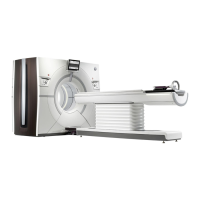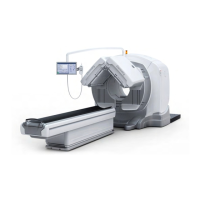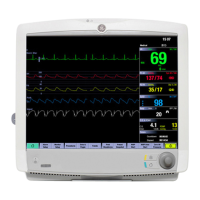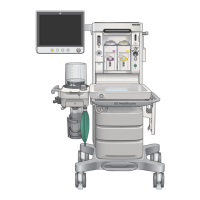GE MEDICAL SYSTEMS CT 9800 QUICK SYSTEM
Rev. 3 Direction 18000
8-6-11
12) MAIN MEMORY SIZING
Description:
This section is just a report of the MAIN MEMORY size that was calculated from the IOP0 test. Most
systems are configured with 1 MEG x 40 bits of MAIN MEMORY (2 stacks high on the Maxi Card).
2 MEG (4 stacks is the maximum used for CT products).
Error conditions:
1) 0.0 MEGAWORDS FOUND
There was no memory found during the IOP0 test, and chances are very good that the IOP0 test
failed since a DMA test can’t happen without memory. If just the IOP0 path fails, then the problem is
IOC or backplane. If all paths fail then suspect MMC or MAXI.
2) 0.5 MEGAWORDS FOUND
In this case some memory was found. IOP0 test could have passed or failed. Use troubleshooting
procedure outlined in ”1)” above.
13) IOP REPORT
Description:
This section reports the presence of I/O processors found to be present in the system.
Correct display is:
IOP’s are = DAS CHI ---
The DASIOP is IOP1 (slot #4), the DGIOP (CHI or Common Host Interface) is IOP2 (slot #3), and IOP3
(Slot 2) is not used. The data source for this information is an area of public memory that the I/O processors
continually read and write for communications with the rest of the AP. Error conditions:
a) IOP’s are = --- CHI ---
Failure to recognize the DASIOP means the the DASIOP identification code was not read from public
memory. Failure points are:
1) DASIOP - dead processor, bad Public Memory interface
2) Public Memory bus / public memory (if this is true then MASTER and SLAVE PUBLIC memory
access tests will also fail).
The DAS cable does NOT have to be connected to the ST-CT processor for the DASIOP to be
recognized by this test. BUT AN INCORRECTLY INSTALLED DAS CABLE CAN CAUSE
EXTENSIVE DAMAGE TO THE DASIOP BOARD. Check that the cable is correctly installed (Pin
1 up).
b) IOP’s are = DAS --- ---

